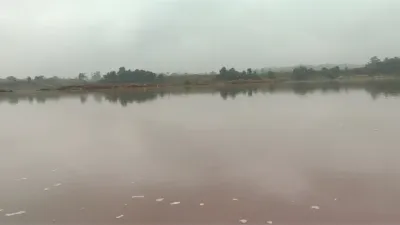Is West Bengal Facing 25 Drowning Deaths Daily?

Synopsis
Key Takeaways
- 25 drowning deaths occur in West Bengal each day.
- 13 of these deaths involve children.
- The study indicates a severe underreporting of drowning fatalities.
- Community engagement is vital for accurate data collection.
- Preventative measures can significantly reduce drowning incidents.
Kolkata, July 24 (NationPress) A new study conducted by the Indian division of a global research organization has revealed that West Bengal experiences 25 drowning fatalities each day, with 13 of these being children.
The report from the Indian branch of the George Institute for Global Health, which is available through IANS, indicates that the actual drowning crisis in West Bengal is significantly more severe than what official statistics show.
Claimed to be the most extensive survey of its kind in India, it encompasses all 23 districts of West Bengal, covering a population of 18 million.
The George Institute for Global Health, an independent medical research organization based in Australia with branches in India, China, and the UK, focuses on non-communicable diseases and large-scale clinical trials.
According to a statement from the George Institute on Thursday, the survey, backed by Bloomberg Philanthropies, found that approximately 9,191 individuals die from drowning annually in West Bengal—almost three times the estimates provided by the Global Burden of Disease, highlighting a significant gap in our understanding of this preventable health crisis.
In their research, the team employed a cost-effective Community Knowledge Approach, involving over 15,000 local residents to report deaths in their neighborhoods, which were then verified through household surveys with the families of victims.
Dr. Medhavi Gupta from the George Institute emphasized that the true scope of drowning deaths in West Bengal—and likely in many regions of India—has largely remained unnoticed.
"As a majority of these deaths occur among children, families lack the legal or financial motivation to report these incidents to authorities. Inadequate access and use of healthcare systems also result in missed deaths. This research sheds light on the severe burden affecting rural areas of West Bengal,” Gupta stated.
The report has proposed several strategies to reduce drowning deaths in West Bengal. Recommendations include constructing fences around ponds and open water bodies to protect toddlers aged 1-2, particularly near residential areas, integrating swimming and water safety training into the school curriculum for children aged six to ten through the state education department, and enhancing local capabilities in safe rescue and resuscitation, as over 90 percent of drowning rescues are carried out by family members or neighbors.









